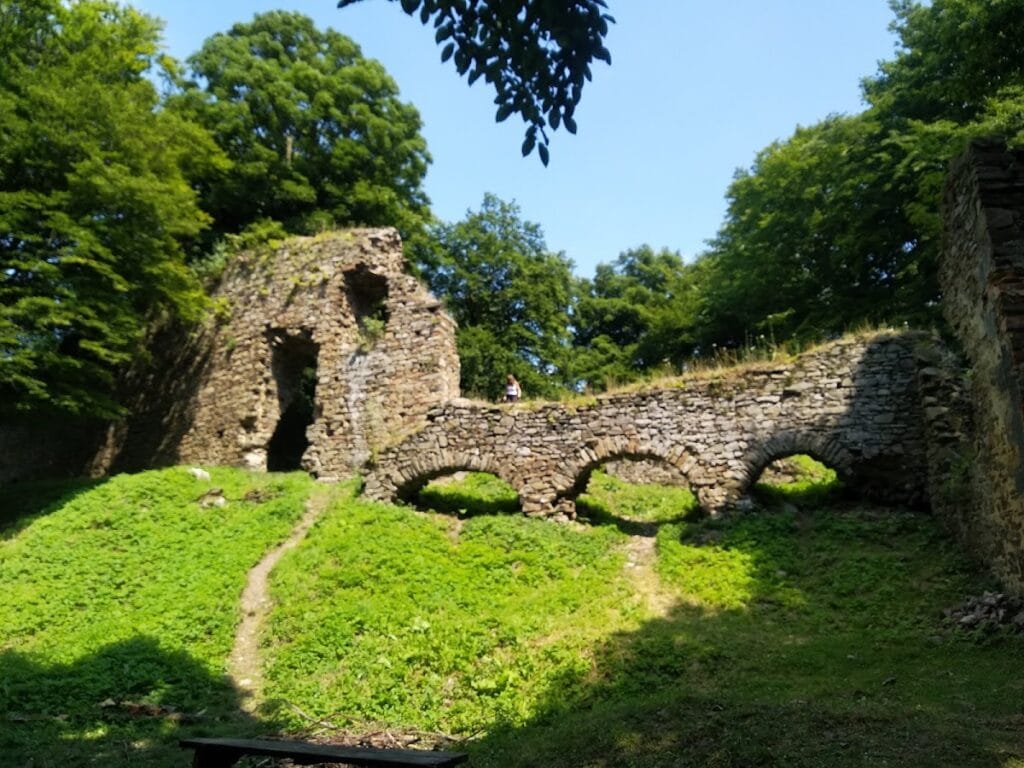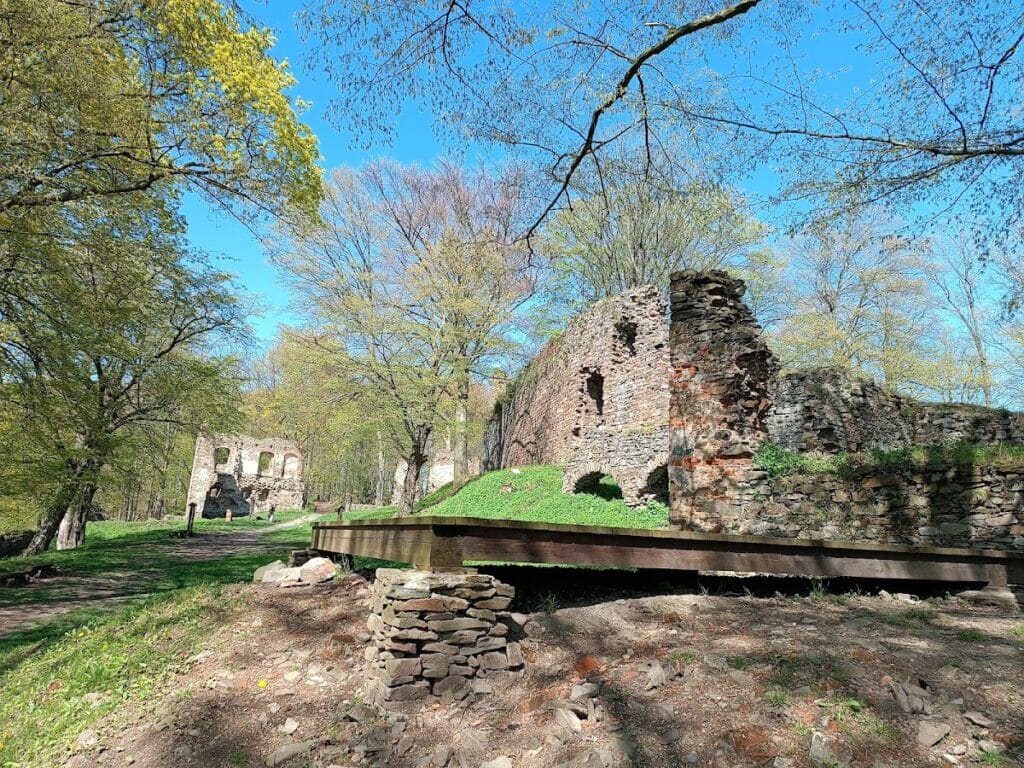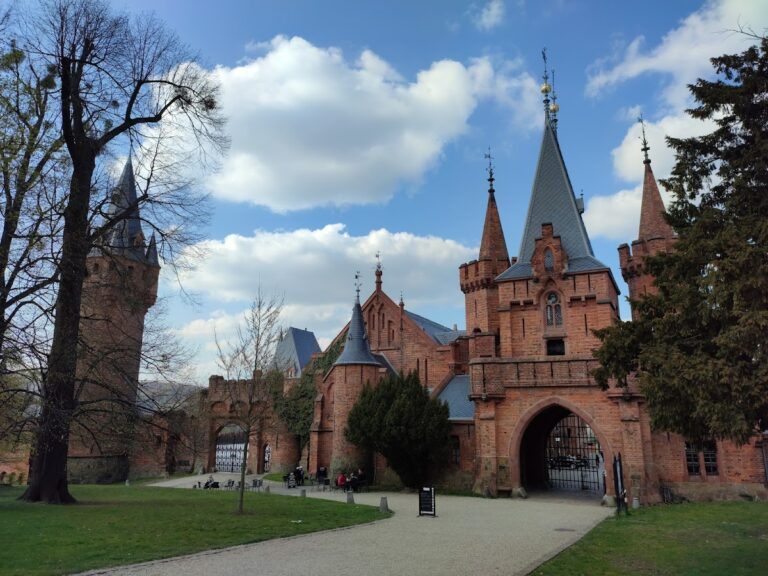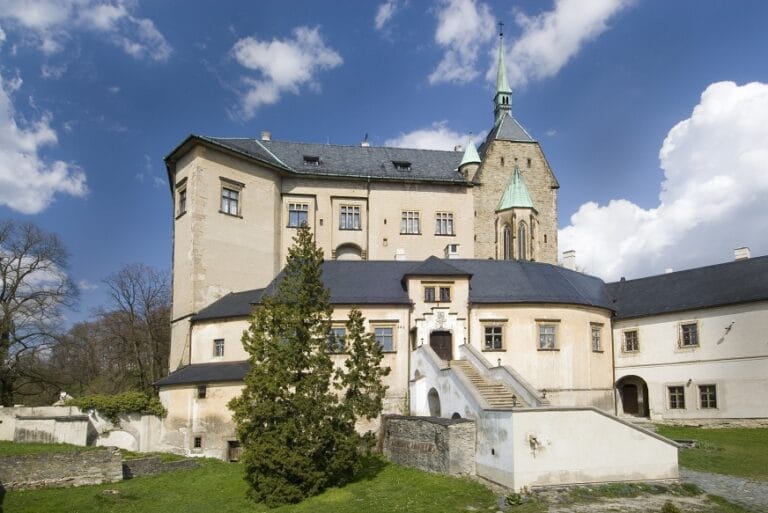Vikštejn Castle: A Historic Gothic and Renaissance Fortress in the Czech Republic
Visitor Information
Google Rating: 4.7
Popularity: Low
Google Maps: View on Google Maps
Country: Czechia
Civilization: Medieval European
Remains: Military
History
Vikštejn Castle is situated near the village of Radkov in the modern Czech Republic. It was established by the Czech noble Vítek z Kravař in the latter half of the 13th century with the purpose of overseeing the strategic route leading to Troppau (today’s Opava).
The first documented mention of the castle appears in 1377, during a period when the Duchy of Troppau was divided among ruling families. By the late 14th century, the fortress had come under the possession of the Opava princes, a branch of the Přemyslid dynasty. In 1461, control of Vikštejn was granted to Budiwoj von Morawitz, but this changed soon after when King George of Poděbrady confiscated the property and assigned it to Hynek Bírka z Násíle.
The castle’s military importance drew it into the Bohemian-Hungarian conflict during the mid-15th century. In 1474, it was seized and dismantled by Matthias Corvinus, the Hungarian king, leaving it in ruins. Roughly half a century later, between 1525 and 1530, Jan Plankner von Kinsberg undertook substantial reconstruction. This restoration introduced Renaissance elements while also reinforcing the fortress’s defenses.
Following this renovation, ownership passed to the Oderský family in the late 1500s and remained with them until 1708, after which the Reich family acquired the property. The 17th century brought further turmoil during the Thirty Years’ War. Danish troops inflicted damage in 1626, and in 1646, imperial forces deliberately destroyed the castle. Partial repairs began toward the end of the 1600s, but the castle no longer functioned as a noble residence and was gradually repurposed for agricultural activities.
After 1776, with the construction of a new chateau in nearby Horní Vikštejn (also known as Dubová), Vikštejn Castle was abandoned permanently. Over time, it fell into decay. In recognition of its historical significance, the remaining ruins were officially protected as a cultural monument beginning in 1964.
Remains
The ruins of Vikštejn Castle reveal a fortified complex primarily designed in the Gothic style, built atop a steep rocky outcrop overlooking the Moravice River. Its elevated position allowed control over the surrounding landscape, especially the route toward Opava, reflecting its original strategic purpose.
A key element of the fortress is a tall defensive tower, which dominates the remaining structure and would have served both as a lookout and stronghold. On the northern side, the natural terrain was altered to enhance defense by carving a deep dry moat into the rock. This trench was later augmented in the 16th century with bastions—projecting structures enabling defenders to cover adjacent walls more effectively.
Throughout the castle grounds, vestiges of fortifications bear the marks of Renaissance adaptation dating to around 1530. These modifications aimed at strengthening the castle in response to changes in military technology and aesthetic trends at that time. While many stone walls and defensive features survive in fragmented form, no detailed inscriptions or decorative elements have been preserved or documented.
Though the castle was partially repaired after its damage in the Thirty Years’ War, it eventually ceased functioning as a residence and was left to deteriorate following its abandonment in the late 18th century. Today, the ruins stand as a testament to centuries of regional history, offering visible evidence of Gothic and Renaissance architectural strategies used for defense in medieval Moravia.







